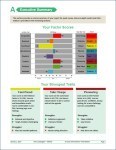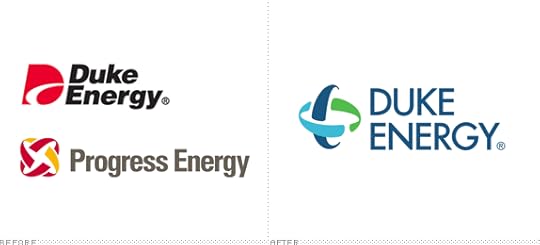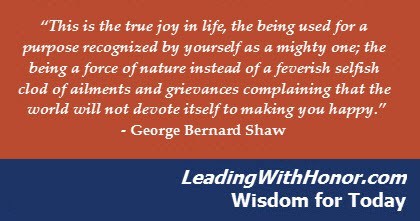Lee Ellis's Blog, page 312
March 19, 2015
Lee Ellis Interview – Avoiding Future Leadership Mistakes ��� Listen and Learn
In one of our favorite Lee interviews to date, Lee goes deep and shares his 40+ year of expertise and insight on Business Unconventional Radio on how to successfully build your business the right way. What a great way to avoid needless leadership and management mistakes���please listen and learn!

March 18, 2015
Avoiding the Hiring Nightmare: Tactics for Hiring the Best Employee
By Lee Ellis
The employee-hiring process always has the potential to be a stressful one. Hire the wrong person, and it causes lost time and money for the organization. Hire the right person though, and team momentum and getting results get a huge boost.
Here���s a step-by-step list* for all leaders to consider as you hire your next employee. How do you evaluate their potential? How many different ways can you evaluate them? What are the attributes you need to consider to help avoid significant time and money lost?
Tools for Insight and Evaluation
The following areas are commonly used to gain insights into an individual���s potential for success in a particular position. Perhaps you have some favorites that you use regularly. Try adding a new evaluation tool, test it, and see if it improves your evaluation and hiring process ���
R��sum��
Assessments
References
Recommendations by people you don���t know
Recommendations by people you do know or are known to someone you know
Past work history
Education and training patterns and results
Past Achievements
Interview
Interview by someone in the company of the opposite sex from the primary interviewer. Women and men often have very different insights in an interview.
Current life situation, such as a willingness to relocate
Expressed goals for the future
Attitude and other intangibles
Trial with a short-term project, contract, or temporary basis
Key Factor Considerations
If you���re initiating a long-term work relationship, it���s important to get to know the potential employee in a holistic sense by looking broad and deep to understand the total person. The following eight factors are recommended to be considered in the hiring process to avoid any surprises after you���ve hired the employee. These factors aren���t necessarily intended to be interview questions, but they can serve as a general guide to help you evaluate the potential match –
Passion
What does the person really want to do?
How strong is the desire?
What are the motivating factors?
Natural Talents (behavioral strengths, personality, temperament)
How closely do the candidate’s strengths and struggles match what is most commonly found in those who succeed in this or similar positions? Use assessment services to identify talents. Remember, you���re not looking for average talents for the key functions of the position. For those areas, the individual should be using his or her best talents���those that have the highest potential for immediate use as well as further development. Also, these talents should be ones that the person is highly motivated to use. For instance, corporate trainers usually love to prepare and then perform by presenting material to a group. A trainer who does not have a passion for communicating information to a group is likely to be a boring and unmotivated speaker.
Character and Integrity
Is this person reliable?
Is this person ethical?
Is his or her work ethic compatible with the job, mission, and organization?
Experience����
What type of work has he or she done in the past?
How much of his or her experience will transfer into the position you are filling?
What has been the past level of achievement?
Are you considering the candidate more for now or growing him/her into a position later?
Job-Related Skills
Based on past performance, has the candidate demonstrated the skills that are needed in the position?
Chemistry and Diversity
How well will this person fit the work team?
Can he or she quickly become part of the group?
Is it likely that he or she will accept others on the team and be accepted by them?
Caution! Don’t make the common mistake of seeing “different as wrong.” Diversity is essential to a competitive workplace. Also, remember that first impressions can be biased by our past experiences.
Values
Will your organization���s products, services, and culture be complementary to the values of the individual and vice versa?
Will there be conflicts? If so, how significant are the potential conflicts?
Can everyone on the team accept the conflicts and still be good teammates?
Retention and Career Progression
Consider how long you would like to keep this person in this position.
Try to determine how long the candidate would want to stay in it. Evaluate how much growth potential the person has available in the position.
How strongly is the candidate motivated toward career progression versus stability? Is this person looking for a stepping-stone or a long-term relationship?
Taking the necessary time to evaluate candidates during the hiring process is worth the effort. Please share below any additional thoughts or suggestions on this topic.
LE
*These suggestions can serve as a supplement but should not supersede your organization���s human resources, policies and procedures.
~~~~~~~~~~~
 Would you like to have a state-of-the-art, leadership-focused discovery process that evaluates everyone in your organization? Think of the power in understanding each team member���s natural strengths and struggles and how they work in harmony with each other. With over 30 years of assessment development experience, Leadership Behavior DNA��� will help you get the best return on investment in talent management. Download a free, 19-page sample report.
Would you like to have a state-of-the-art, leadership-focused discovery process that evaluates everyone in your organization? Think of the power in understanding each team member���s natural strengths and struggles and how they work in harmony with each other. With over 30 years of assessment development experience, Leadership Behavior DNA��� will help you get the best return on investment in talent management. Download a free, 19-page sample report.
��

March 17, 2015
How to Help Your Employees Be Happier
How much should you care about happiness in the workplace? Should nurturing happiness be a part of your job description? On a -5 to +5 misery/happiness scale should you spend a lot of effort trying to move unhappy people from a -5 to a -2? Or should you get serious and try to move people to a +3 or +5?
Research suggests that you should take the positive side of the happiness scale very seriously. Doing so can convert you from a firefighting, Whac-a-Mole problem-solving mode of operating to a Pharrell Williams-like “room-without-a-roof” super-leader.
Read this article, and please share your comments -

March 16, 2015
Thanks to Duke Energy for Seeking to Lead with Honor!
Special thanks to Jeffrey J. Lyash, Executive Vice President – Energy Supply, Duke Energy, for his kind words about the Leading with Honor message –
���Duke Energy and Progress Energy recently merged, bringing two of the best electric utilities in the country into one organization. During this process, it became evident early on that we had an opportunity to establish a new culture for the combined organization. Colonel Ellis spoke to a group of about 140 key leaders within the Power Generation Operations and Central Engineering and Services groups and did a masterful job of relating his experiences in combat and as a prisoner of war in Vietnam to the challenges that Duke Energy is facing as we stitch our two companies together. He has helped us ���lean into the pain��� and provide clarity as we face our mission head on. His presentation was masterfully done and left a permanent positive impression on those that attended.���

March 15, 2015
On This Day in Leadership History, March 15, 2015
On this day in 1493, Christopher Columbus returned to Spain after his first New World voyage. As a leader, consider the bravery, intent of purpose, and sense of satisfaction in accomplishing his goals.
May we all be as focused on achieving our goals and purpose as this Italian navigator, explorer, and colonizer!
Christopher Columbus – Wikipedia

March 13, 2015
Leading with Honor Wisdom for Today, March 13, 2015
���This is the true joy in life, the being used for a purpose recognized by yourself as a mighty one; the being a force of nature instead of a feverish selfish clod of ailments and grievances complaining that the world will not devote itself to making you happy.��� ��� George Bernard Shaw

March 12, 2015
An Inspiring Story of Personal Leadership ��� Watch This Clip from Bill Merriam
We have an encouraging boost for you today! In this short clip, Bill Merriam shares his story on his fight with bile duct cancer. Told from a runner’s point of view, it’s a story of hope and the importance of appreciating each day as well as those important relationships in our lives. Bill is an example of authentic leader in his sphere of influence!

March 11, 2015
What are Some ���Career Blindspots��� that can Potentially Lead to Blindsiding and Career Injuries? Be Informed.
Sometimes, what you don’t see, know, or do can hurt you in the workplace and hamper your career prospects. What are some ���career blindspots��� that can potentially lead to blindsiding and career injuries?
Lee quickly shares his expertise in this Slideshare Presentation. Be informed, and share it with others!

March 10, 2015
Who Needs More Courage Today? See Inside for Encouragement and Guidance
Who needs more courage today? We all do! One of Lee���s foundational leadership lessons is to ���Confront your Doubts and Fears���. It’s one of the most important principles that he emphasizes in his consulting and presentations. Spend some time on the question below, and think about the areas of fear that are holding you back ���
Question ��� ���In what areas of your life are you lacking courage?��� Circle or list all areas that apply:
Physical courage (willingness to risk physical pain, injury, or even loss of life)
Professional or political courage (willingness to risk promotion, job, or career)
Reputational courage (willingness to risk prestige, your standing in the community
Relational courage (willingness to risk rejection, disappointment, emotional hurt, loss of relationship)
Financial courage (willingness make tough decisions to save more or spend less and get out of debt)
Personal and emotional courage (willingness to take risks to grow as an individual by breaking old habits and learning new ones)
Reflect on each of the above. Need more guidance on this topic of fear vs courage? Visit us online for additional insight - www.freedomstarmedia.com

March 8, 2015
On This Day in Leadership History, March 8, 2015
On this day in 1855, a train passed over the first railway suspension bridge at Niagara Falls, NY. A border crossing between Canada and the United States, the Suspension Bridge played significant roles in the histories of the Niagara region and the two countries.
The railroads brought a large influx of trade and tourists into the region around the Niagara Falls. Many tourists flocked to the bridge to view the acclaimed marvel of engineering, as well as tightrope-walking daredevils who performed against the backdrop of the falls. In the time leading to the American Civil War, the Underground Railroad helped slaves in the United States escape across the Suspension Bridge to freedom in Canada. After the war, the bridge became a symbol of inspiration to Americans, encouraging them to rebuild their country and pushing them to quickly industrialize their nation.
If you���re a leader that has a vision for achieving a new thing, you���re achievement may have far-reaching implications that you never thought possible. Consider the pros and cons of your goals as you move forward.
Niagara Falls Suspension Bridge – Wikipedia












